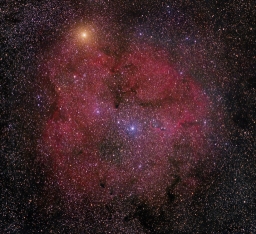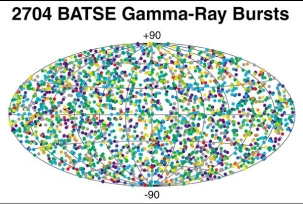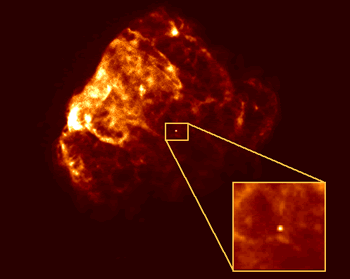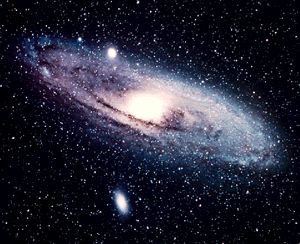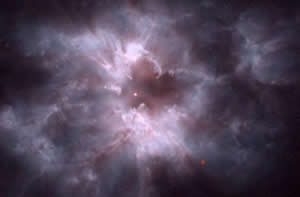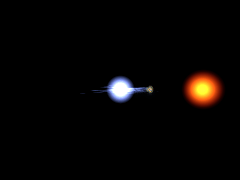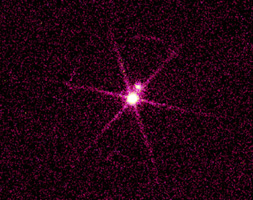The region of sky near the star Mu Cephei, with a nebula known as IC 1396.
Click on image for star map
© Matt BenDaniel
Click on image for star map
© Matt BenDaniel
Mu Cephei Deep Red Giant
| What's in a Name: | Known as the "Garnet Star" because of its deep red color - one of the most intensely colored stars ever recorded when viewed through a telescope. |
| Claim to Fame: | Famous variable star. Its brightness is 4 times greater at its maximum than at its minimum. |
| Type of Star: | Red Giant (M2 Ia Spectral Class) |
| How Far Away: | 1,550 light years away |
| How Big: | 2536 times the solar radius. Would fill the orbit of Saturn. Could pack more than 1 billion suns into the same volume. |
| How Bright: | 38,000 times brighter than the sun. Absolute visual magnitude, Mv =-6.7 |
| Where to View: |
Located in the constellation of Cepheus ( |
| When to View: | Best viewed from the Northern hemisphere during August through January |
Last modified January 17, 2006 by Travis Metcalfe.


